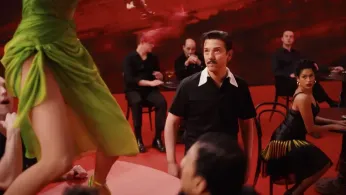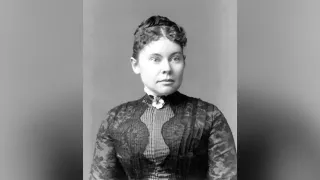
5 hours ago
Diego Luna Confronts Stage Fright in "Kiss of the Spider Woman": "I Need Many Tequilas" to Dance
READ TIME: 3 MIN.
Diego Luna, internationally acclaimed for his roles in "Andor" and "Narcos," recently opened up about the anxiety he experienced while preparing for a pivotal dance scene in the cinematic adaptation of "Kiss of the Spider Woman." Despite his numerous credits and accolades, Luna revealed that the prospect of dancing on screen made him distinctly uneasy. "I need many tequilas to dance," Luna confessed, underscoring both the vulnerability and humor with which he approached this unique challenge .
The film, which explores themes of desire, identity, and resilience within the context of a Latin American dictatorship, required Luna to not only act but also physically express his character’s emotional journey through dance. For Luna, who admits, "I am not a dancer," the experience was as daunting as it was essential to the authenticity of his performance .
Luna’s preparation for the role took him to New York, where he worked closely with renowned choreographer Sergio Trujillo. The transition from acting to dancing was, by Luna’s own account, a steep learning curve. "It was a challenge, but a fun one to take," he said, recalling his initial doubts about whether he could meet the demands of choreography .
Trujillo’s advice was to focus on layering emotions and to be patient with the process. The choreographer emphasized the different approaches actors and dancers take—actors, Luna explained, rarely use mirrors, fearing that too much self-observation can disrupt the authenticity of their performance. "We don’t work with mirrors," Luna noted. "There are actors that cannot even see themselves on the monitors. Because it gets ruined, the process gets basically." In contrast, dancers rely on mirrors constantly to perfect their movements, a habit Luna had to adopt despite his discomfort .
Learning to observe himself critically without succumbing to self-doubt was an exercise in both vulnerability and growth. "It took me a while to learn to see myself in that mirror without judging myself in a way that made me just run away," Luna said, highlighting the psychological hurdles he had to overcome to inhabit his character fully .
Luna credited his co-star, Jennifer Lopez, for helping him move beyond anxiety and begin to enjoy the creative journey. "I didn’t start enjoying the journey until she came in. I was anxious and suffering," Luna admitted. Choreographer Trujillo reassured him, saying, "I know you are worried, and you should be, but whatever you don’t get right, she’s going to make it look right. It’s going to look great, because she’s bringing that other thing that you are missing" .
This sense of camaraderie and trust reflects the collaborative spirit at the heart of "Kiss of the Spider Woman," a story that, since its original 1976 novel by Manuel Puig and subsequent stage and screen adaptations, has been a landmark in LGBTQ+ storytelling. The narrative centers on the bond between two prisoners—a queer window dresser and a political dissident—who find solace and understanding in each other while facing oppression.
Luna’s willingness to confront his own insecurities and adapt to a role deeply entwined with LGBTQ+ themes speaks to the ongoing importance of inclusive representation in mainstream media. "Kiss of the Spider Woman" has long been recognized as a milestone for its nuanced portrayal of queer identity and resilience under authoritarianism. The film’s dance sequences, in particular, serve as metaphors for self-expression and liberation—core themes for the LGBTQ+ community worldwide .
For Luna, the process of learning to dance for "Kiss of the Spider Woman" was ultimately about more than just mastering choreography. It was an exercise in empathy, humility, and solidarity. By sharing his struggles and growth, Luna helps destigmatize the fear of vulnerability—a message that resonates not only with aspiring performers but also with anyone who has felt out of place or underrepresented.
The film is currently in theaters, inviting audiences to witness both a classic story and a contemporary actor’s journey of self-discovery and allyship .






